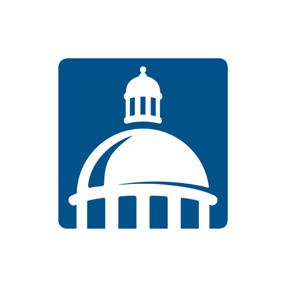Debt is something most people will have in their lifetime. Debt comes in many forms, from loans to help pay for education, vehicles, and homes, to credit cards and personal loans. Debt itself isn’t a bad thing, but how you treat it can determine whether you have healthy or unhealthy debt.
What is Debt?
Debt is what you owe after you borrow money, usually from a credit union or a bank. There are two general kinds: secured and unsecured. Secured debt is backed by assets, such as vehicle and home loans. Unsecured debt is not backed up by assets. This includes credit cards, some personal loans, and payday loans.
Nearly all debt includes interest rates — extra money you pay the lender on top of the amount you borrowed. The rate you pay is determined by several factors, including your credit score, relationship with the lender, type of loan, and certain economic factors that determine baseline rates for loans, such as Treasury Bill rates for mortgages, and the Prime Rate for credit cards.
Unhealthy Debt Symptoms
Do you suffer from any of the following?
- High credit card debt that grows each month?
- Able to pay only the monthly minimum amount on credit cards?
- The inability to pay all your monthly expenses on time?
- Credit score declining?
- Turned down for a loan or new credit card recently?
- Using predatory payday loans to bridge financial gaps or pay for unexpected expenses?
If you answered yes to any of the above, you may be experiencing unhealthy debt. But don’t worry, there are several treatment plans to help you turn your unhealthy debt to healthy debt over time.
Treatment Plan 1: Pay off Credit Cards
Credit cards often have a lot of advantages, including earning cash back and points good toward travel, as well as convenience and additional levels of security. But if you feel you would like to reduce your credit card debt, there are two proven methods that can help: snowball and avalanche.
- In the snowball method, pay off your credit card with the lowest balance first, then apply the funds you used to pay off that card toward the card with the next lowest balance.
- In the avalanche method, pay off the credit card with the highest interest rate first, then apply the funds you used to pay off that card toward the card with the next highest interest rate.
Treatment Plan 2: Consolidate debt into a healthier alternative
Consolidating your debt into one loan with a lower interest rate can simplify your bill paying and reduce your overall costs.
- Personal loan: Credit unions offer personal loans with competitive rates and flexible repayment terms that you can use to consolidate high-interest debt, such as credit cards, medical bills, and other loans. SAFE offers personal loans that don’t require collateral. Qualified members can borrow up to $20,000.
- HELOC: Home equity lines of credit can be used to consolidate loans into one easy payment. HELOCs are secured by your home and have lower rates than most credit cards. SAFE offers HELOCs on both primary residences and second homes at competitive rates and terms.
Treatment Plan 3: Explore Other Lending Options
- Refinancing a high interest loan such as a mortgage or vehicle loan into one with a lower rate can help you shave monthly payments and the overall cost of the loan.
- Avoid high-interest predatory payday loans and instead consider a Quick Access loan from SAFE to bridge a financial gap. SAFE’s Quick Access Loan typically offers lower rates and more flexible repayment terms than risky payday loans.
Experience Healthy Debt
After engaging in a debt treatment plan, you are more likely to have healthy debt, which is marked by these conditions:
- Can comfortably pay monthly bills on time
- Have manageable credit card balances
- Largest amount of debt is in secured loans, such as vehicle and home loans
- You can pay your monthly bills and have money left to save
SAFE is Here to Help
If you’re suffering from the ill-effects of unhealthy debt, SAFE can help. We will work with you to find the treatment plan that works best for you to get you into a healthier relationship with debt. Contact us to schedule a phone or in-person appointment, or explore our loan, credit, and free financial education resources such as budgeting guides and debt-paying strategies on safecu.org.
Learn More
Schedule an appointment to talk with a SAFE representative on your options.



